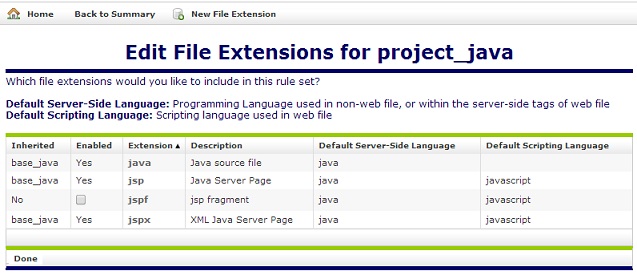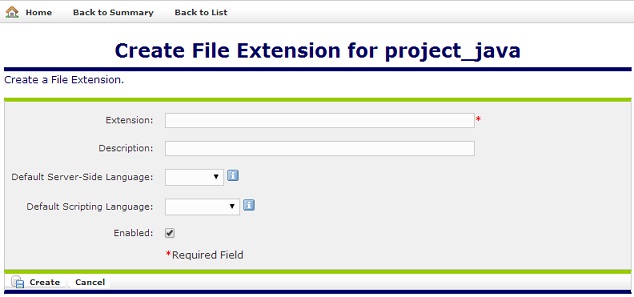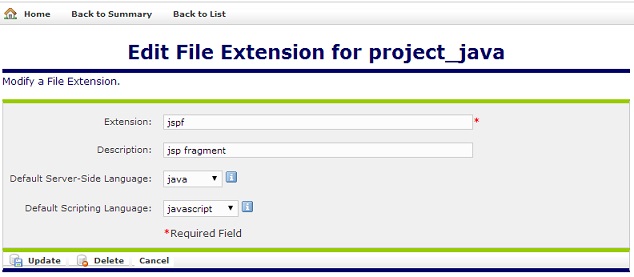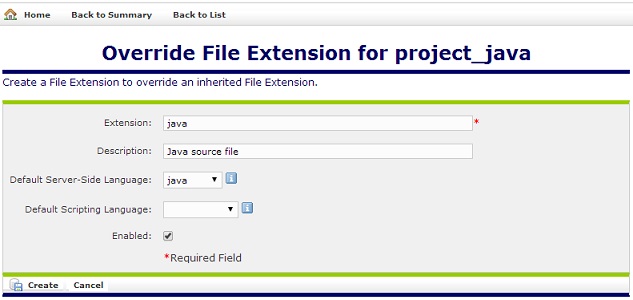Setting File ExtensionsThe Edit File Extensions list, shown below, allows you to choose the types of files to scan. In other words, when Globalyzer performs a scan, only these types of files are considered. Also note that the scanner only looks for files of these types that lie in the scan source path.
The Inherited column lists the name of the Rule Set that defined the file extension. A value of 'No' indicates that the file extension is local to the Rule Set. Local file extensions can be modified and/or deleted. Inherited ones can be overridden. To disable a local file extension, uncheck the box. The file types that are checked are added to the Rule Set. To specify a new file type, select the New File Extension link at the top of the form. This displays the Create File Extension form shown below.
The page contains five fields used to describe a file extension: Extension, Description, Default Server-Side Language, Default Scripting Language, and Enabled. Use the Extension field to provide the new file extension (DO NOT enter the dot). Use the Description field to describe the file extension. Default Server-Side Language names the programming language used in a non-web file, or within the server-side tags of a web file. This field may not be necessary for your file extension. Default Scripting Language names the scripting language used in a web file. This field may not be necessary for your file extension. The Enabled field determines whether the file extension is included (checked) in the scan or ignored (unchecked) for now. Once the file extension information is complete, press the Create button for the changes to take effect. The Edit File Extensions list redisplays, showing your changes. If a file extension is local to the Rule Set, it can be modified and/or deleted. Click on its name hyperlink from the Edit File Extensions list. This displays the Edit File Extension page, shown below. All fields are modifiable. Press Update to save any changes. Press Delete to delete the file extension. After updating or deleting, the Edit File Extensions list redisplays, showing your changes.
If a file extension is inherited, it can be overridden. Maybe the you want to disable the inherited file extension in your Rule Set. Click on its name hyperlink from the Edit File Extensions list. This displays the Override File Extension page, shown below. All fields are modifiable, but if you change the extension field, you will end up creating an entirely new file extension, rather than overriding the inherited one. Press Create to create the override file extension. After creating, the Edit File Extensions list redisplays, showing your local file extension.
To return to the Customize Rule Set page, select the Back to Summary link. |





 Configuring Rule Sets
Configuring Rule Sets